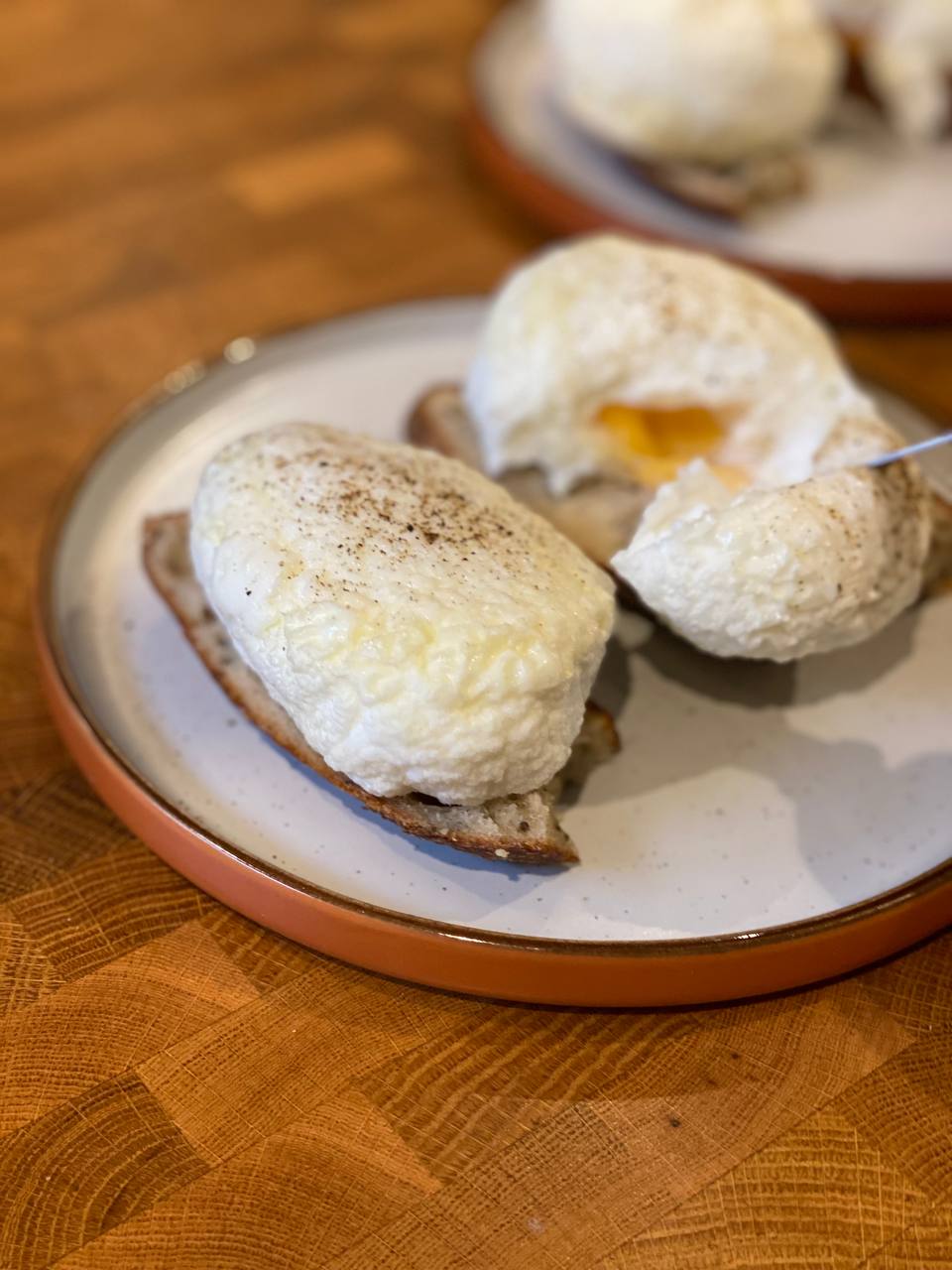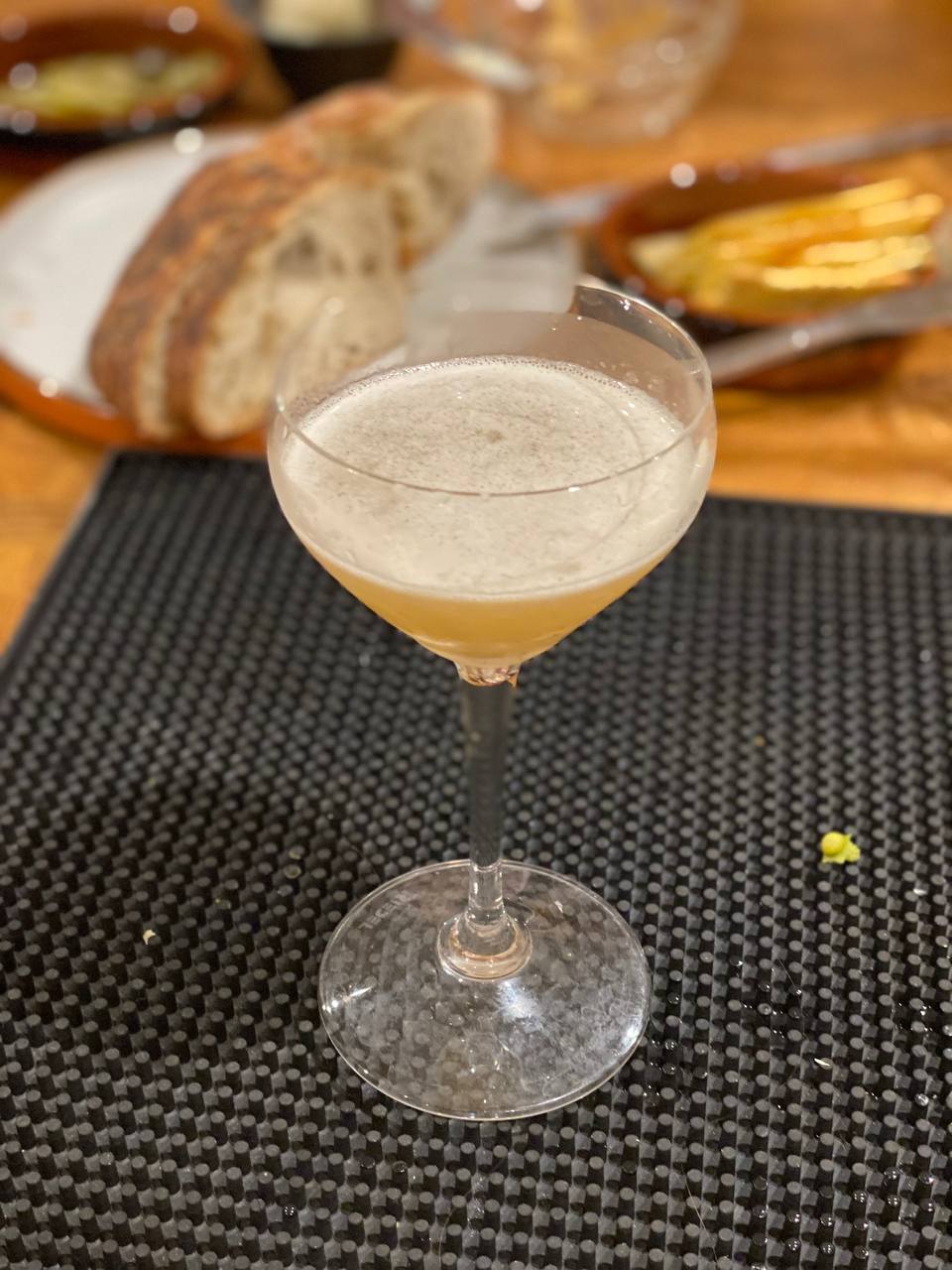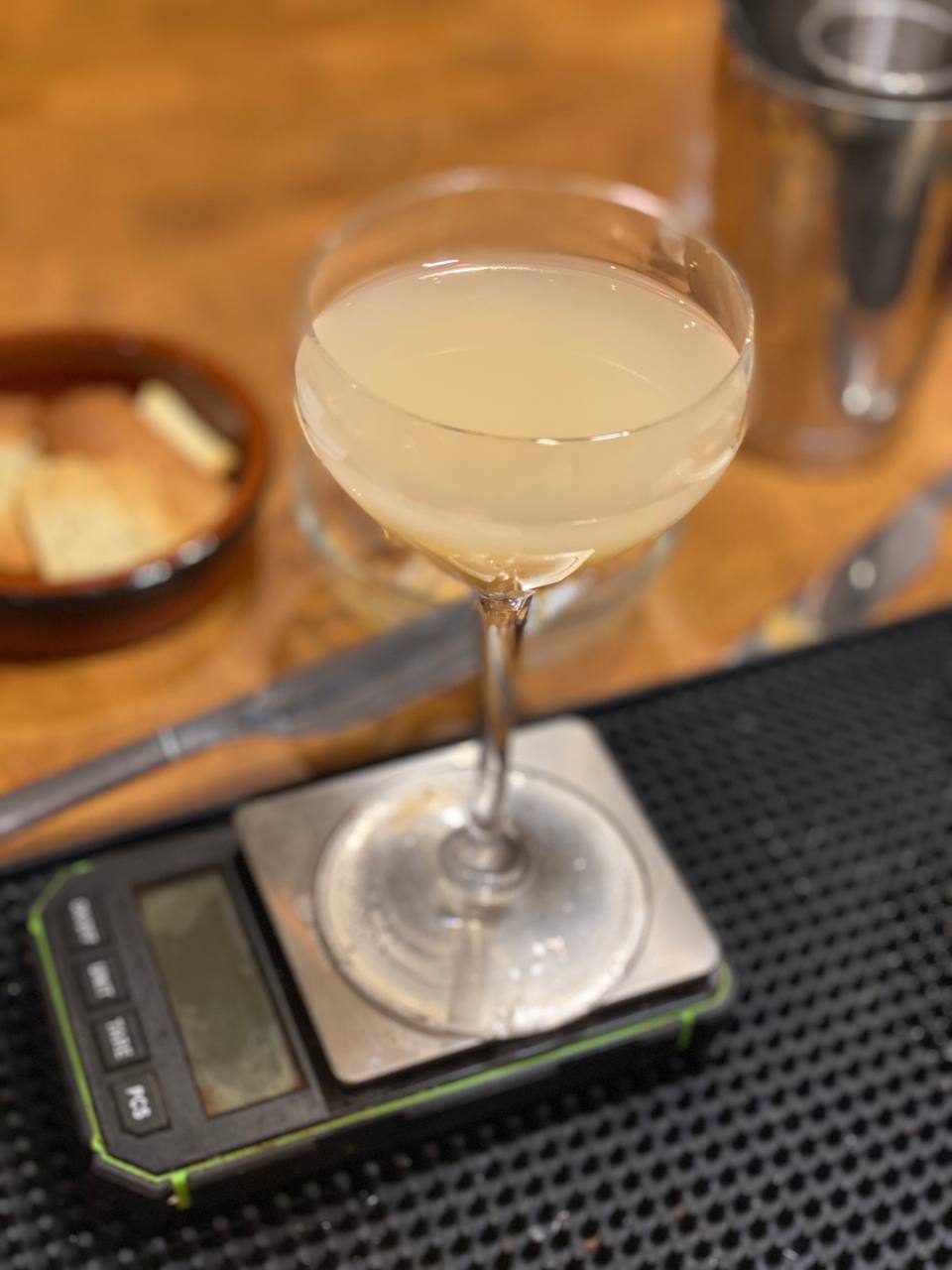Tuesday Triage #80
- TUESDAY TRIAGE #80 by Vadim Drobinin
- On dealing with clay
- Things I enjoyed reading
- 1. Everything Must Be Paid for Twice by David Cain
- 2. The Internet Changed My Life by @Love2Code
- 3. The Revenge of the Hot Water Bottle by @lowtechmagazine
- 4. What it’s like to make $100k+ walking dogs by @zzcrockett
- 5. Off the grid by hundredrabbits
- 6. How a Simple Math Equation Can Transform Your Productivity by Ozan Varol
- 7. The first fairy stories were never intended for children by Philip Hensher
- 8. My Out-of-Body Experience by Joel Fronhlich
- 9. The Spacing Effect: How to Improve Learning and Maximize Retention by @shaneaparrish
- 10. In search of London’s longest journey by Jonn Elledge
- Things I didn't know last Tuesday
- 1. Hverabrauð
- 2. Skeleton key
- 3. Fruit bat curry
- 4. St. Louis Bagel
- 5. Aranese
- 6. Vietnamese Egg Coffee
- 7. Milk preserved with embalming fluid
- 8. The role of Fish & Chips in World Wars
- 9. Bill W.
- 10. Éclade de moules
- Book of the week
- Thank you and see you in a week!
TUESDAY TRIAGE #80
by Vadim Drobinin ¶
Your weekly crème de la crème of the Internet is here!
25.01.2022 (read in browser)
-
Intro
Whatever is on my mind this week. -
Things I enjoyed reading
Ten-ish articles I found worth reading. -
Things I didn't know last Tuesday
Ten-ish facts I didn't know when I wrote the previous edition. -
Book of the week
Some thoughts on the latest book I've read.
On dealing with clay ¶
I've been looking at handmade tableware for quite a while, and while the price is rather high it's the lack of storage space that so far prevents me from buying all possible sorts of plates and espresso cups.
But surely there must be some space at least for the ones I would make myself?
Over the weekend we went to an intro pottery class, which was on the opposite side of the city. To my surprise, I already visited the area a few years ago for some Christmas social at work, but getting there by public transport was kind of different from slouching in a cab where there are nine of you, partially drunk.
That being said, the class was superb: my previous exposure to clay was limited by making a few edible clay truffles and also some shaped by hand coasters, so actually spending a few hours at the throwing wheel was a delight.
I can't really say I am ready to do everything alone yet, but still quite proud by these two cups:

Hopefully next time they will show us how to make plates.
In the meantime, I dug up a funny recipe, something akin to poached eggs, but with slightly more prep and slightly less cleanup. Egg whites are whipped and layered in kitchen film, egg yolks are carefully placed atop:

Everything is tied up and steamed for five minutes, then served. Obviously it could be taken from here, but even the very basic version goes really well with homemade butter and bread:

I've already mentioned that avoiding booze in January helps me to "reset" my palate and double down on mixing drinks over the rest of the year, so zero-proof cocktails are on the rise again.
Sasha mixed these Daiquiris on a "tequila" I brewed last year, and while I usually stay away from fruit-based cocktails, these ones were really good and balanced:

Same with this clarified Banana Chai, based on roasted with skin bananas and lots of spices:

I also made a batch of smoky strawberry Old Fashioned, but didn't have a chance to snap a picture as it is too sweet to my liking, so probably next time I will have a more balanced version.
Things I enjoyed reading ¶
1. Everything Must Be Paid for Twice by David Cain ¶
A very true observation that we pay for things first with money, and then with either time, or efforts, or both.
But no matter how many cool things you acquire, you don’t gain any more time or energy with which to pay their second prices—to use the gym membership, to read the unabridged classics, to make the ukulele sound good—and so their rewards remain unredeemed.
I believe this is one reason our modern lifestyles can feel a little self-defeating sometimes. In our search for fulfillment, we keep paying first prices, creating a correspondingly enormous debt of unpaid second prices. Yet the rewards of any purchase – the reason we buy it at all — stay locked up until both prices are paid.
So buying a cheap book doesn't mean that reading it would be cheap or simple. Not reading it at all would also mean throwing money away.
For me it also applies to buying cheap things and then wasting time and energy on making them work as expected, so maybe there is something budgeting apps could analyze better.
2. The Internet Changed My Life by @Love2Code ¶
A very touching story about one's life of growing up in the Internet. Judging by the majority of people I know, a very common one too, although I might be biased.
This is part of the story of how the internet changed my life for the better. I’m an early millennial and I was raised online. Through the internet, I found friends, support, and the human connection that I was lacking in real life. I also found valuable information that helped me help myself and sometimes help others. The key with information is always to effectively filter the good from the bad, which is a genuine life skill unto itself. My life today isn’t perfect, but it’s better than it’s ever been.
This is also something I feel like the older generation didn't understand straight away. To them the Internet was first a far away concept, then an odd game, and then an unknown danger. Somehow they never considered it to be a medium of human interaction.
3. The Revenge of the Hot Water Bottle by @lowtechmagazine ¶
I barely remember how I used to use hot water bottles in my childhood, although I do remember how they used to look like. I had one bear-shaped (yes, because this is Russia) which had some crystals inside, supposedly meant to aid its heating, and when it became too small for me I'd occasionally use a bigger one shaped as a rectangle.
Still think it's a great thing to have:
Nevertheless, when I sent two dozen hot water bottles to friends and family as a Christmas present, the reactions were almost unanimously enthusiastic. People show themselves very much surprised that such a humble object can provide so much comfort. Because I don’t have the time nor the budget to send hot water bottles to everyone, I have written this article. It’s largely based on my personal experience – I have been using hot water bottles for many years and they are the only heat source in my apartment.
Although using them as a complete heating replacement might be a stretch.
4. What it’s like to make $100k+ walking dogs by @zzcrockett ¶
On one hand, this article reads like an entertaining story about entrepreneurship and market economics.
Once the dogs are partnered, he has to keep the leashes from tangling.
“You have to put the dogs in a certain order,” he says. “The troublemakers stay close, and the shy ones get a bit more slack. You also have to factor in things like poop frequency, age, and timidity.”
However I can't stop thinking that it also perfectly describes a role of a team lead or an engineering manager in an IT company.
5. Off the grid by hundredrabbits ¶
A very detailed guide from folks living off the grid – on a relatively small boat while travelling from country to country.
Dry food will keep for a long, long time on ocean passages. We keep a variety of dried grains, but also dried vegetables since we don't have refrigeration. Dried veg keep well in air-tight containers, their nutrients are preserved, and add variety to dishes. We add dry vegetables to boiling pasta to re-hydrate them. Dry mushrooms like shiitake, and kombu(algae) are a great base for broth. Our favorite dry foods are nori, kombu, dried tomatoes, raisins, dates, TVP(textured vegetable protein), shitake, dry tofu, rice cakes, radish etc.
Growing up I loved books by Jules Verne and stories about Robinson Crusoe, and this post reminds me why. I would definitely not do it myself for so long though: a mere thought of living without a refrigerator gives me shivers.
6. How a Simple Math Equation Can Transform Your Productivity by Ozan Varol ¶
The title might be a bit misleading, but that's why you have me and hand-picked quotes:
And then the message hit me. When we operate at a fraction, we compromise the output.
Most of us go through life operating at a fraction in everything we do. We check email during Zoom meetings. We shove a sandwich into our mouth with one hand while scrolling through our phone with the other. When we work, we think about play. When we play, we think about work. We exist in this in-between state—we’re neither fully here nor there—constantly operating at a 0.2 or a 0.8 instead of a full 1.
I wouldn't really blame checking email during Zoom meetings – most of these meetings could've been emails instead anyway, but I do agree that trying to do a fraction of everything very rarely leads to great results.
7. The first fairy stories were never intended for children by Philip Hensher ¶
While bloodiness of many fairy stories is probably not a surprise for most, the article is a good summary of most noticeable writers who contributed to their transformation into children books:
The terrifying end of the Grimms’ the Goose Girl, with the false queen laying out the terms of her own sadistic punishment, and that of the Snow Queen with the splinter of ice melted and the children grown up and returned home, are such worlds apart from each other that you wonder what, in the end, Andersen was doing. The explanation may lie in his difficult personality, which exasperated many. After he stayed too long with Dickens in the summer of 1857, a notice was placed in the spare bedroom reading: ‘Hans Christian Andersen slept in this room for five weeks — which seemed to the family AGES!’ A more balanced personality could never have created the moments of extremity where not just Andersen’s tales, but folk tales in general, live.
It's been a while since I actually read any of those, but the Steadfast Tin Soldier was one of the saddest stories I watched on a filmstrip in my childhood. I still remember the slides (and they still feel sad).
8. My Out-of-Body Experience by Joel Fronhlich ¶
This journal on trying out the float tank therapy got me googling the nearby float centre.
Float tank therapy simultaneously allows one to become more aware of one’s body while also feeling more detached from it. If this feels like a paradox, that’s partially because, like many experiences that might be described as “spiritual,” it’s difficult to understand it fully unless you’ve felt it for yourself. Like meditation, Floatation-REST likely trains the practice of mindfulness, or nonjudgmental awareness of the present moment. Both practices may enhance awareness of the body while also altering or weakening one’s sense of self and, thus, one’s sense of bodily ownership. Yet unlike meditation, which typically involves explicit instructions and many hours of practice, Floatation-REST might work quickly with minimal instructions. Just float in the darkness and let the rest happen naturally.
I love quite surroundings and darkness, so just floating in the dark for a few hours sounds like a nice way to spend some time. The out-of-body experience might be a pleasant bonus.
9. The Spacing Effect: How to Improve Learning and Maximize Retention by @shaneaparrish ¶
The magic behind Anki and memory cards, but explained in way more details:
Memories are not located in any one part of the brain. Memories are formed in a process which involves the entire brain. If you think about your favorite book, different parts of your brain will have encoded the look of it, the storyline, the emotions it made you feel, the smell of the pages, and so on. Memories are constructed from disparate components which create a logical whole. As you think about that book, a web of neural patterns pieces together a previously encoded image. Our brains are not like computers – we can’t just ‘tell’ ourselves to remember something.
I never had enough patients to actually stick to the repetitions cadence, so for me it didn't work much. Especially at the university, where most things we had to memorise wouldn't fit on a card.
Maybe it's time to revive the method for learning Italian?
10. In search of London’s longest journey by Jonn Elledge ¶
Recently I referenced an attempt to find the longest train journey in the world, but this one is different: it's just the longest journey, but in London instead and sticking to public transport.
That suggests that my instincts that Harefield and south eastern Bromley were the farthest flung had been correct. But it also showed there was one I’d missed, which seems to be the hardest to reach of all: Coldharbour Point, a forgotten spot in Rainham Marshes two miles or more from not just the nearest station but from any road that might see a bus. Even journeying from there to Romford, the commercial centre of the same borough, will take the better part of two hours: so logically, the journey from Coldharbour to the point that takes longest to reach must be the longest journey of all.
I am slightly sad that the final result doesn't utilise a bunch of weird bus routes but I guess that happens too.
Things I didn't know last Tuesday ¶
1. Hverabrauð ¶
Iceland is known for different bread-based dishes, but cooking the bread itself in springs is quite cool on its own:
Traditionally known as hverabrauð, the bread is the sumptuous result that comes from baking dough underground in the heat of local geothermal springs for 24 hours. After pulling the loaf from the pot, we sliced it, smeared the pieces in locally-made butter, and topped them off with pieces of smoked trout that came straight from the lake. I took a bite of my first slice and marveled at its subtle sweetness. It had a soft, but dense and cakey texture that quickly had me going back for seconds.
Kudos to the author for making me hungry in the middle of the night.
2. Skeleton key ¶
As you can guess by the name, I came across the word while looking up horror movies to watch.
A skeleton key (also known in North America as a passkey) is a type of master key in which the serrated edge has been removed in such a way that it can open numerous locks, most commonly the warded lock. The term derives from the fact that the key has been reduced to its essential parts.
The skeleton key is on the right and is meant to replace the two keys on the left:

3. Fruit bat curry ¶
Friends came back from Seychelles and told a story about a local delicacy: curry made out of flying foxes.
There are plenty of recipes on the Internet, but this one is particularly detailed and well-written, I'd definitely give it a try:
The flesh of the fruit bat has a very fruity and gamy flavour. The fruity flavour is imparted in the meat by the numerous fruits and flowers that the bats consume. The flesh can also be tough and is therefore recommended that it is marinated for a few hours before cooking, although some locals will only marinade for about 15 minutes. The marinating assists in mellowing the gamy flavour as well as in tenderising the meat. The marinade consisits of vinegar, salt and cloves.

Although it might be hard to find a decent meat replacement here in Europe...
4. St. Louis Bagel ¶
This has started as a meme, but eventually got taken seriously (despite being just a vertically sliced bagel):
Vertical cutting does not result in "sliced bread"; it gives us ultra-supple disks of bouncy bread, outlined with a ribbon of malty crust. This accident is not an abomination—it’s a brand-new playing field for a brand-freaking-new game.
Check out the full article for ways to make it even better, but here is a sneak peak:
:max_bytes(150000):strip_icc()/__opt__aboutcom__coeus__resources__content_migration__serious_eats__seriouseats.com__2019__08__20190828-st-louis-bagel-recipes-vicky-wasik1-croque-monsieur2-1500x1125-80e955338a7e4e31806b117cf6b19334.jpg)
(image courtesy of seriouseats.com)
5. Aranese ¶
A language that didn't simply survive in Spain but became one of the official ones:
In Val d'Aran, the Occitan language survived as Aranese, and government figures suggest that around 4,000 Val d'Aran residents – about 40% of the population – can read, write and speak Aranese. Despite being suppressed most recently during the Francisco Franco regime, which lasted until the dictator's death in 1975, Aranese received official recognition when Val d'Aran was granted autonomy by the Catalonian government in 1991. And in 2010, Aranese was proclaimed to be co-official alongside Spanish and Catalan, not just in Val d'Aran, but everywhere in Catalonia.
I am actually quite surprised by the latter as Catalonia is famous for its love for Catalan (and Catalan only).
6. Vietnamese Egg Coffee ¶
I love eggs and custards, and I love coffee, but mixing them together and drinking warm doesn't really sound appealing (although I'd totally have it cold like some liquid Tiramisu):
Over the years, Gian, along with other residents of Hanoi, a highly caffeinated city, developed egg coffee into a drink you want even when plenty of milk is on the table. It combines the strength of Vietnamese coffee—whose unique coffee culture is powered by robusta beans, rather than the arabica beans ground and brewed in most of the world’s coffee shops—with a sweet frothiness that makes lattes taste like diet drinks.
It's probably not that bad though, and I don't remember seeing anything similar in other countries:

Seems like the reason was to replicate milky texture without using milk (which was expensive and impossible to find), so it makes sense.
7. Milk preserved with embalming fluid ¶
Meanwhile across the globe in America's 1800s milk was less expensive, but at the cost of children dying from the mixture of formaldehyde, dirt, and bacteria in milk.
Finally, if the milk was threatening to sour, dairymen added formaldehyde, an embalming compound long used by funeral parlors, to stop the decomposition, also relying on its slightly sweet taste to improve the flavor. In the late 1890s, formaldehyde was so widely used by the dairy and meat-packing industries that outbreaks of illnesses related to the preservative were routinely described by newspapers as “embalmed meat” or “embalmed milk” scandals.
Apparently they also used cows brains to change its appearance. That just doesn't make any sense.
8. The role of Fish & Chips in World Wars ¶
I am not really surprised, but during both World Wars British government supported production of fish and chips, so they weren't rationed to keep morale up. There were also more reasons:
The meal became a lifesaver during the D-Day Landings by becoming a password of sorts. She said:
“The British troops used to call out to each other, and one would shout fish and wait for a response of chips to identify each other on the field.”
To be fair, the latter was changed frequently (also "flash... thunder..." is quite a famous example), but even then it seems like I need to reconsider my meal of choice for the Victory day.
9. Bill W. ¶
One of the co-founders of Alcoholics Anonymous asked for whiskey on his death bed but was denied and died 36 years sober.
A heavy smoker, Wilson eventually suffered from emphysema and later pneumonia. He continued to smoke while dependent on an oxygen tank in the late 1960s. Despite asking for whiskey on his death bed, he drank no alcohol for the final 36 years of his life.
I kind of hope that he actually got his glass of whiskey, and the story was told differently just to keep up the legacy of his AA programm.
10. Éclade de moules ¶
A beautiful way to cook mussels:
Éclade de moules is a kind of ritualized mussel-roast, which can be as simple as a family beach picnic or can be expanded to feed hundreds for a wedding. It takes patience and steady hands to arrange the mussels in the traditional pattern of concentric circles. But other than that, it’s the simplest dish imaginable.
So it's a bunch of mussels arranged in circle and then covered with burning pine needles:
Must be full of flavour!
Book of the week ¶
I read and wrote a lot about recipes, restaurants, and chefs, but so far pretty much missed out on another important part of any culinary experience: guests.
And this train of thoughts was prompted by Andoni Luis Aduriz and Raul Nagore, sharing how they think of their guests in Mugaritz: A Natural Science of Cooking:
We listen from the other side of the table.
Some of these people are great conversationalists, and can make us experience their lives for a few minutes through the precision of their words, can convey some of their knowledge to us and make us believe we understand it. We also try to reply to their questions about our work, our dishes, details that have attracted their attention for some reason. These kinds of people are very inquisitive. Artists, thinkers, writers, scientists ... they never seem to switch off their curiosity or enthusiasm.
We observe how our ideas reverberate in their minds, how they return them to us corrected, enlarged, transformed and enriched. Their points of view are invariably different from ours. Sometimes we haven't the slightest idea of how to answer them, but their questions always lead us to reflect on what we do from a perspective we would never have found by ourselves. An opinion, a comment, a 'Why?' or a 'What?' can be a tool that makes us aware of something we would never have noticed. Our way of doing things is altered by small and subtle shades of meaning; it is polished slowly with these questions, like a piece of glass tumbled smooth by the sea.
Cooking on its own is usually meaningless.
Supporting one's body with nutrients could be done in many less complicated ways, or just simplified to a weekly meal prep of boiled chicken breasts and steamed rice.
And yet we care, and we put lots of effort – not just to pursue specific flavours or post pictures of beautiful platings.
The best spice that there is out there is someone's reaction.
People might not like what you've cooked, or might like it a lot – in both cases it's way better than a lack of reaction from someone who doesn't care what they eat.
I'd happily get a meal I cooked returned back instead of watching people eating it with indifference.
Thank you and see you in a week! ¶
If you have any questions, or want to suggest a link for the next newsletter, please drop me a message on Twitter or reply to this email.
Cheers! 🍸